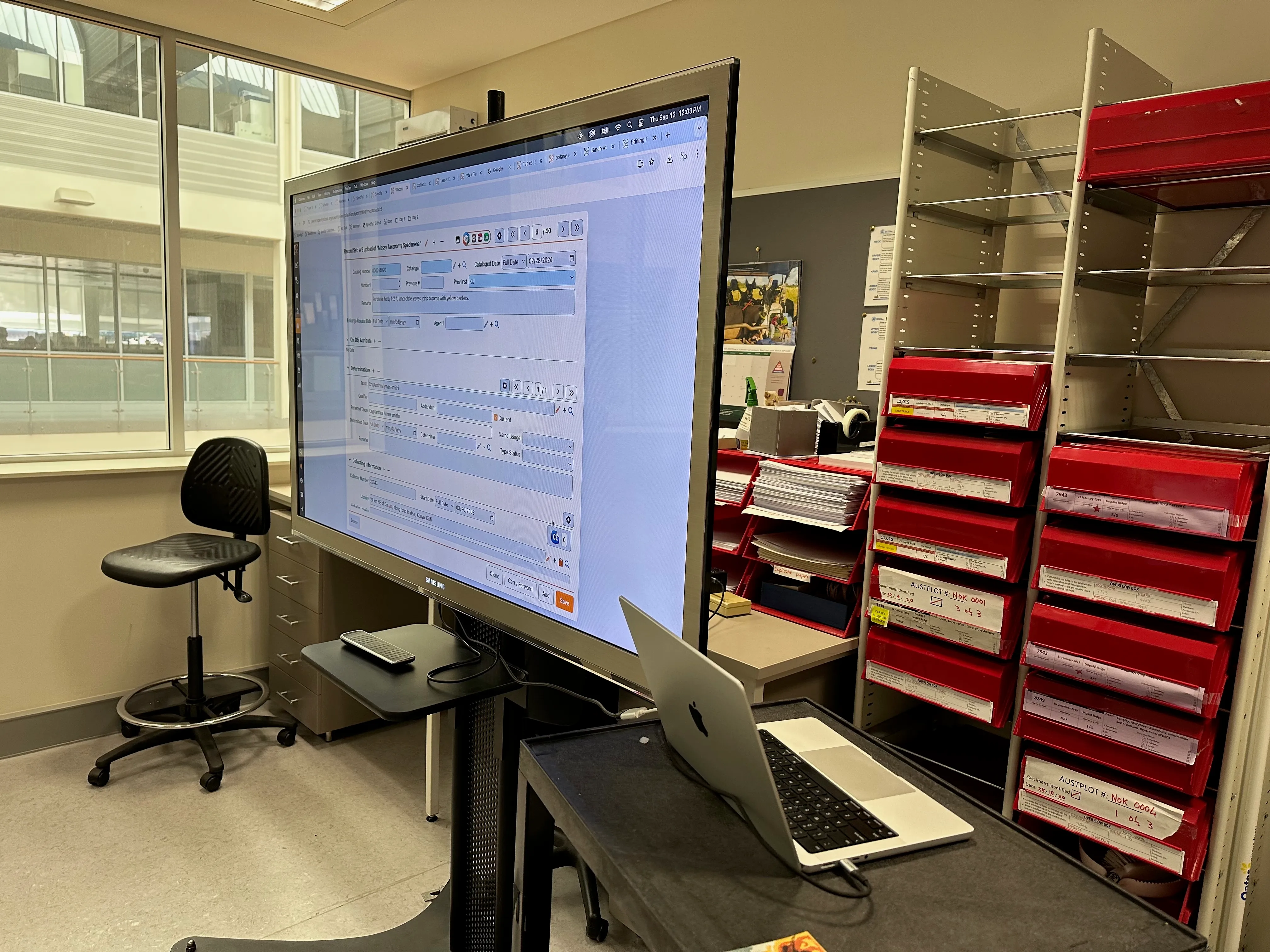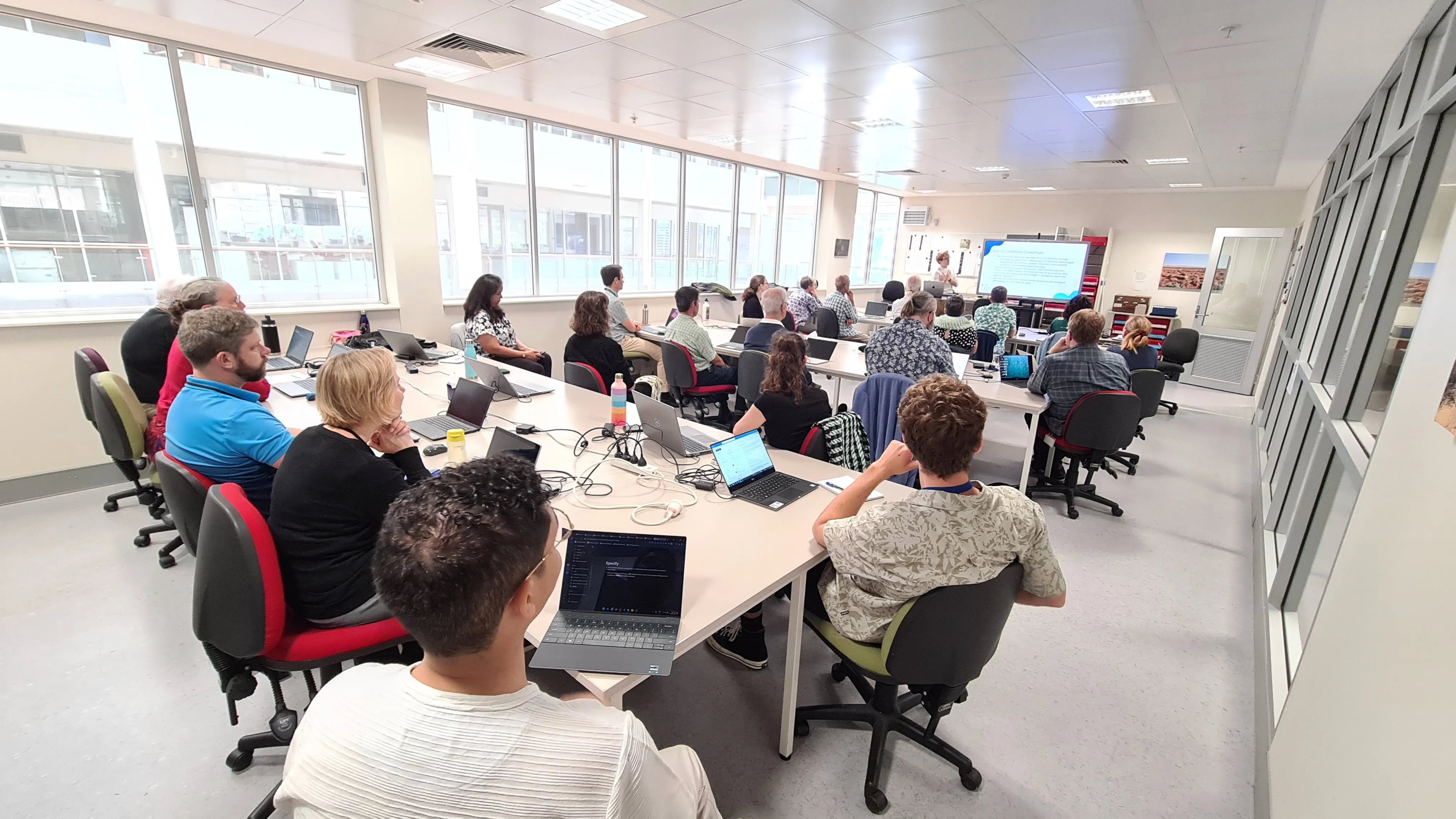Last week, I had the amazing opportunity to work with current and prospective Specify users from around Australia at a workshop in the Western Australian Herbarium (DBCA).
It was wonderful to meet many attendees for the first time and to connect in person with others after knowing them virtually for years.
That’s me speaking below, in case you were wondering!

The workshop was hosted by the Western Australian Herbarium, part of the Department of Biodiversity, Conservation and Attractions (DBCA), and me. It focused on the deployment, configuration, and use of the Specify 7 platform. This two-day event centered on the installation and implementation of our data management system.
Western Australian Herbarium
Known by the internationally recognised Herbarium Code ‘PERTH’, the Western Australian Herbarium houses a collection of more than 845,000 dried specimens of plants, algae, bryophytes (mosses, liverworts and hornworts), lichens, fungi and slime moulds gathered from 1770 to today throughout Western Australia and from across the globe.
You can learn more about PERTH and its research here
Sessions
I had the pleasure of holding the welcome address and hosting a series of informative and interactive sessions about the history, configuration, and use of Specify software. The agenda featured topics ranging from data modeling and program interface navigation to query building and customizing the system.
The participants took advantage of the networking opportunities during breaks, providing a valuable chance for individuals from different institutions to connect and share their knowledge and practices. On the second day, we explored advanced topics, including managing interactions like interinstitutional loans, gifts, and borrows, as well as exporting data. This culminated in a session on creating effective reports and labels for specimens and interactions.
When hosting workshops like this one, I often think of the reasons why institutions like the DBCA are interested in switching to our platform.
- We develop and maintain a low-cost to free system that receives regular updates (and entirely open source).
- We provide support to entire natural history collections for as little as $1,000 a year1.
- Our software has been around and in active development for over 35 years.
Considering that some workshop attendees are using Texpress, a system that is over 20 years old and entirely terminal-based, this change is welcomed by most participants. Other attendees have varying levels of experience with the platform, making this an excellent opportunity to share new capabilities and address their questions.
Managing the expectations of users transitioning from custom solutions built by internal teams can be challenging. We provide software used by hundreds of collections worldwide. While specific functions, such as unique calculations or fully customized interfaces, may offer short-term benefits for a particular collection, the costs associated with an on-site staff member to develop and maintain this software can be substantial. We do our absolute best to accommodate all workflows, but these conversations are an omnipresent part of any workshop.

Most sessions included live demonstrations of the software and open question-and-answer segments. Occasionally, breakout groups formed to discuss specific points or questions. It was extremely useful to speak with these small groups about how they envision organizing the data for their purposes and any concerns they have about the migration.
The event concluded with an interactive Q&A session that provided valuable insights and feedback, empowering attendees to enhance their data management practices. I am incredibly grateful for everyone who participated in this workshop. As I mentioned during the meeting, I feel incredibly fortunate to assist collections staff in managing their data more effectively and contributing to biodiversity research.
Slideshow
To start a workshop like this, I typically present a short (one-hour) overview of the topics we will cover. A PDF of this session is available for reference below:
